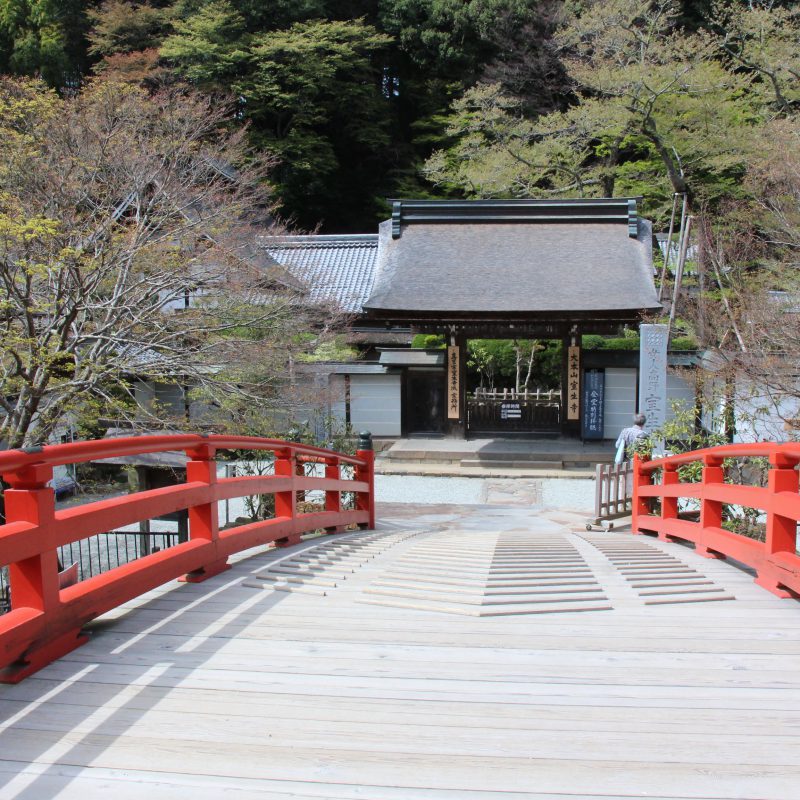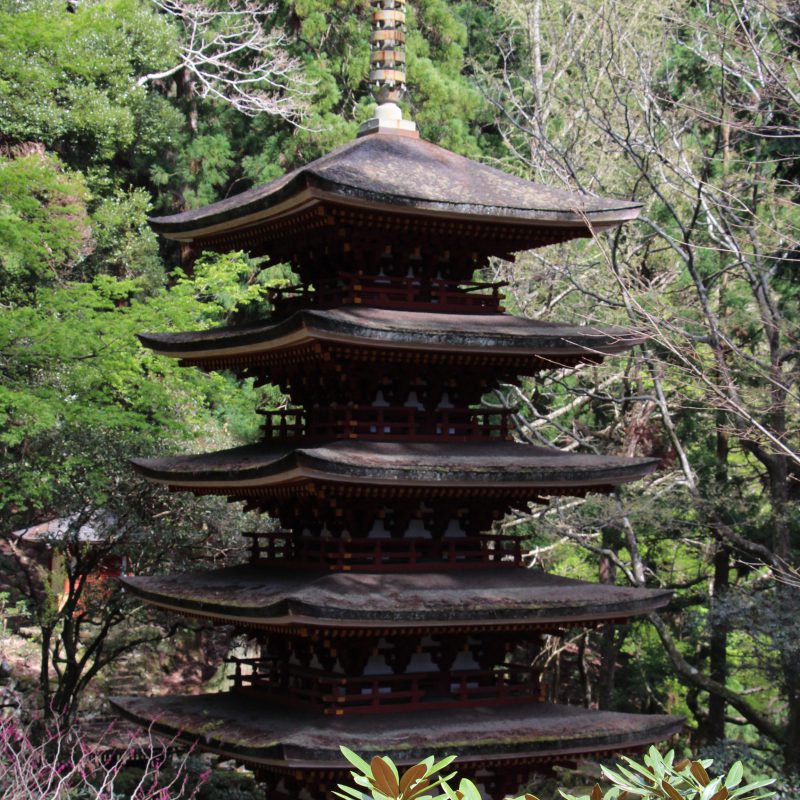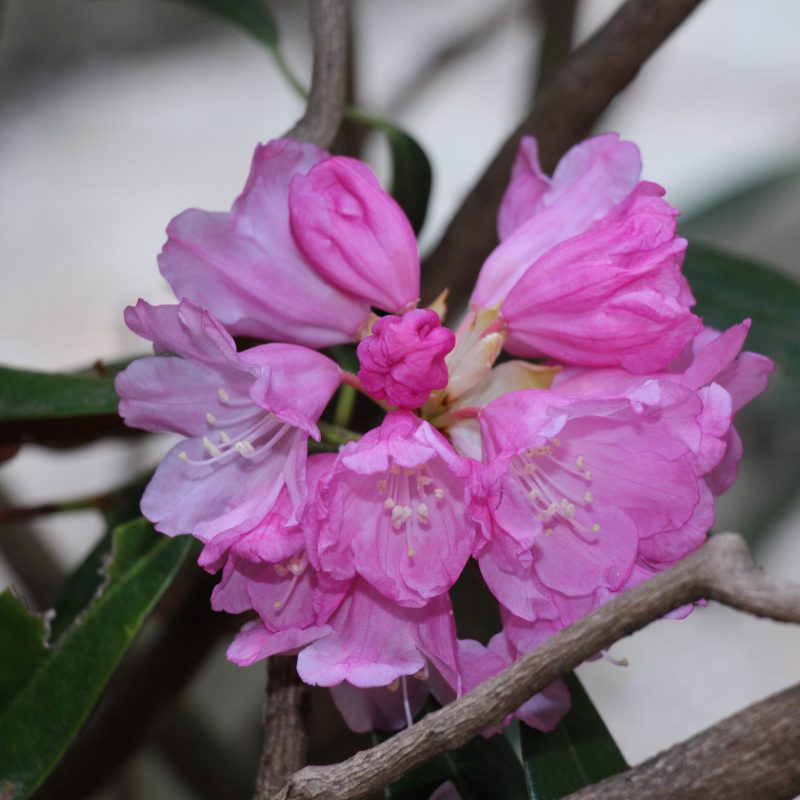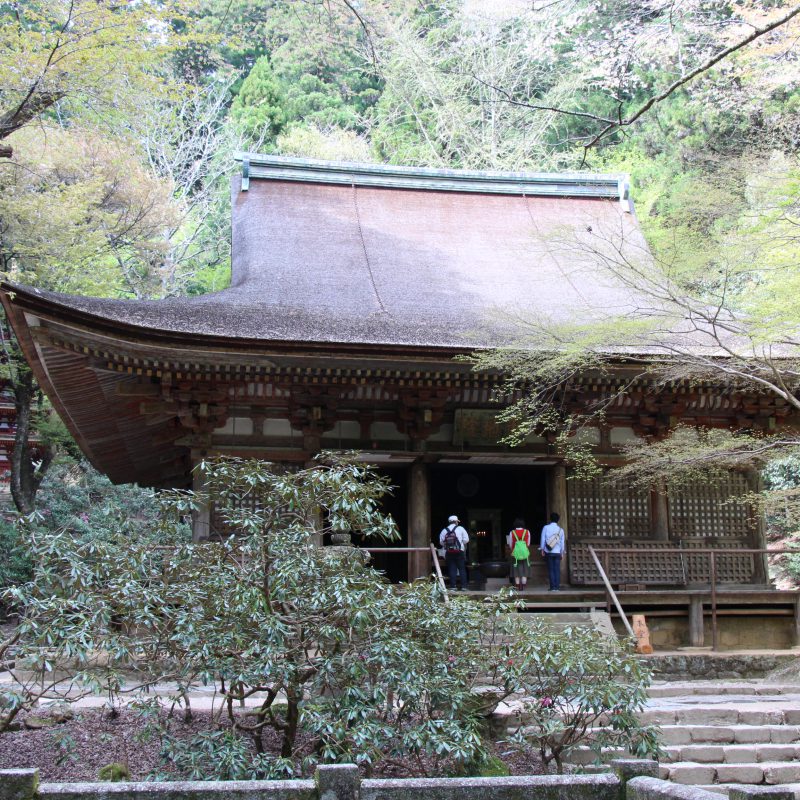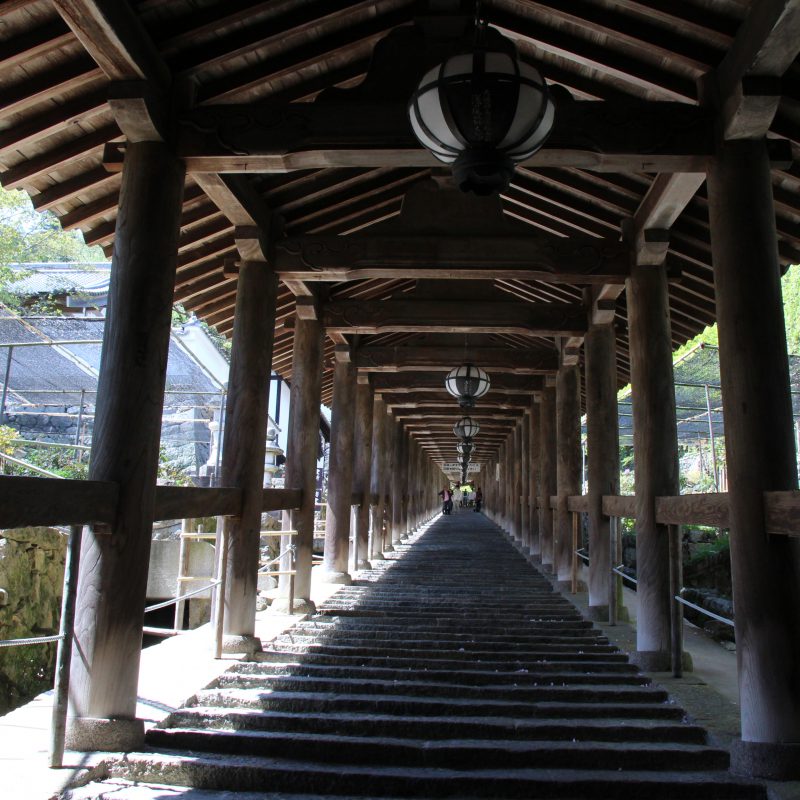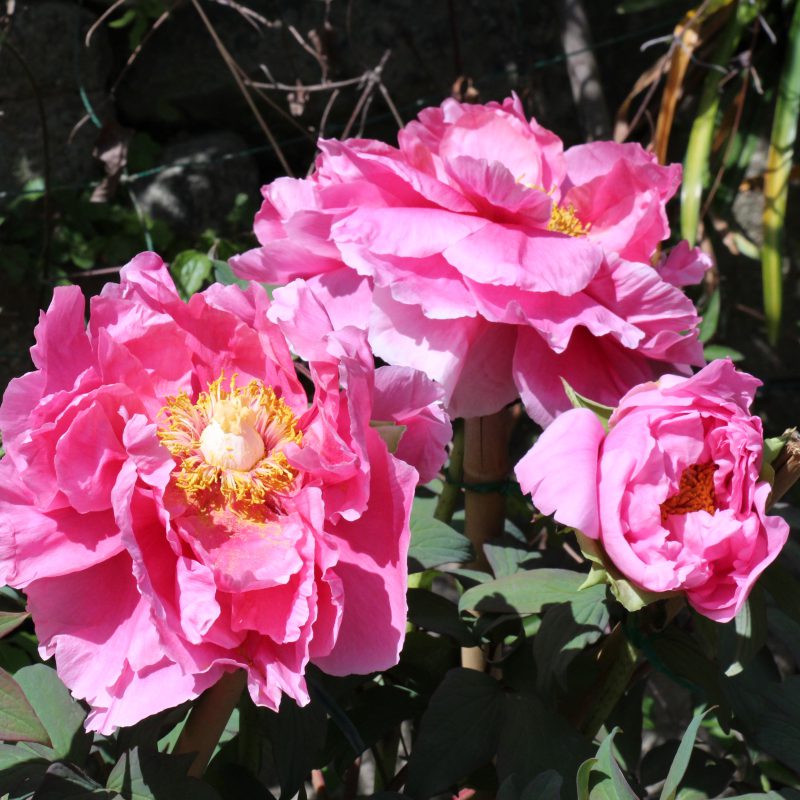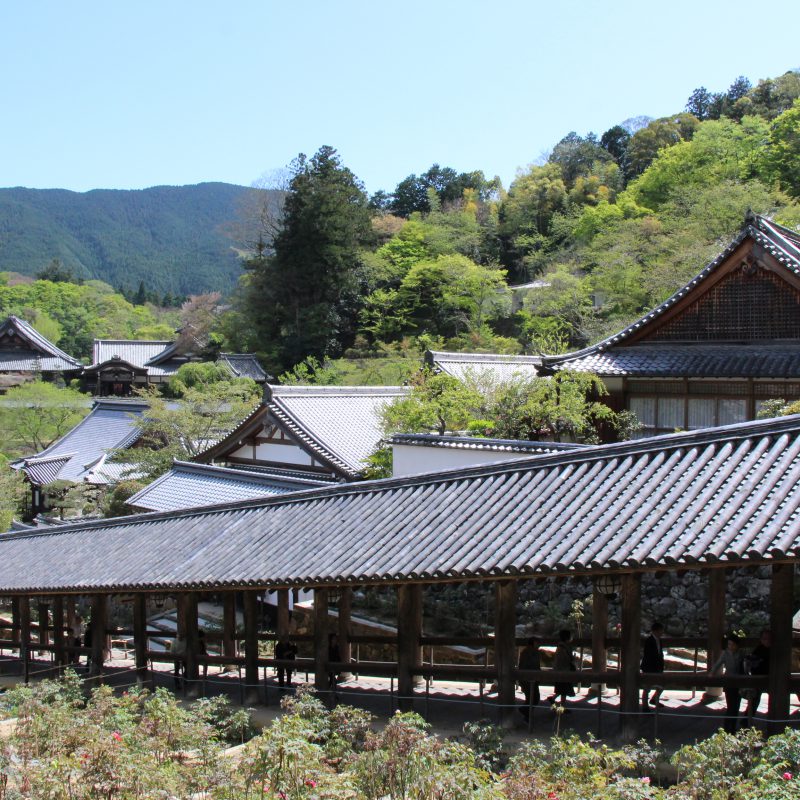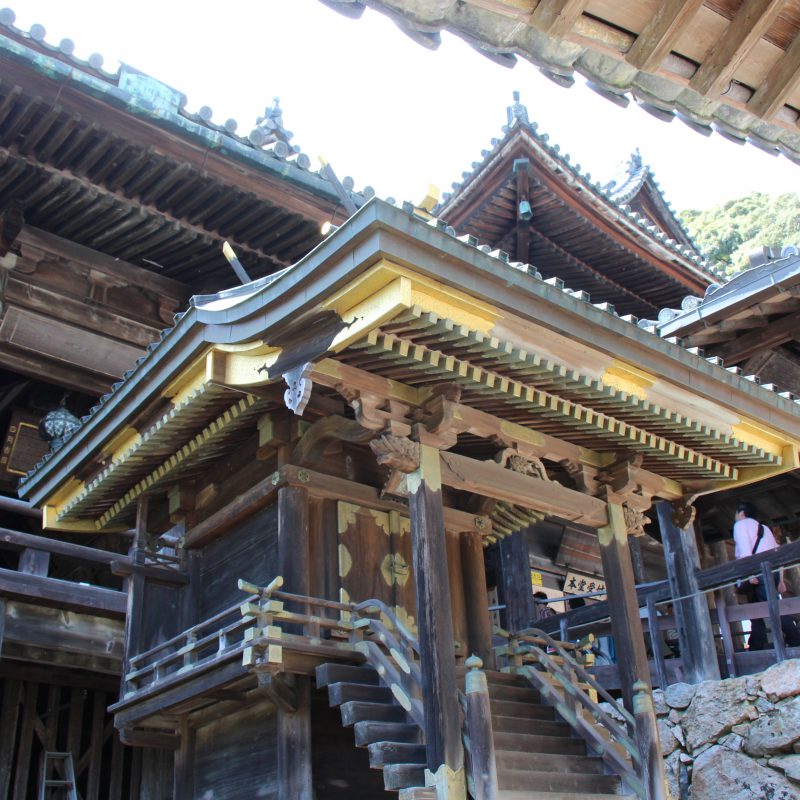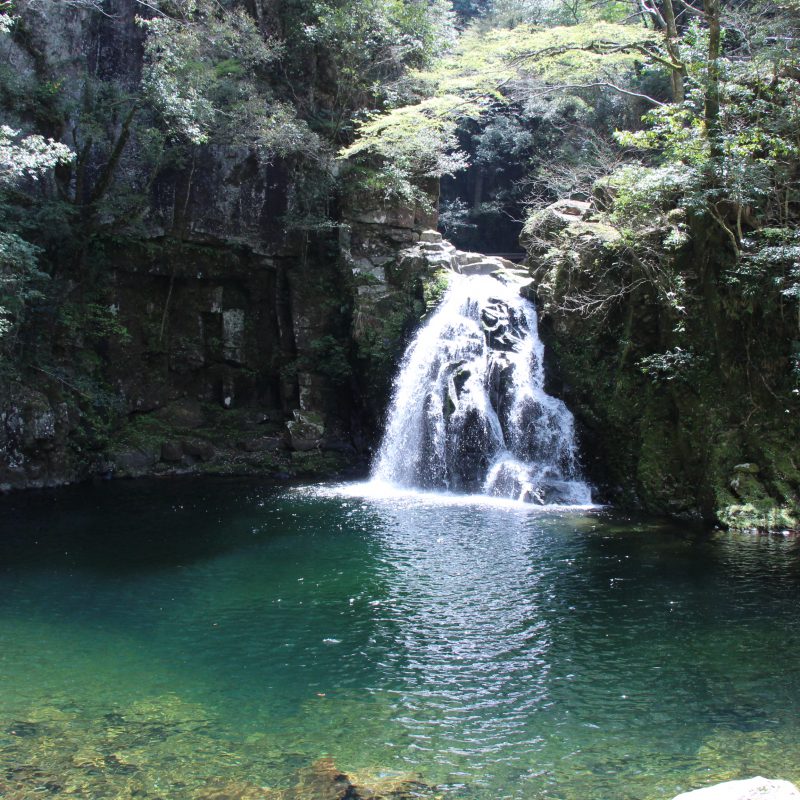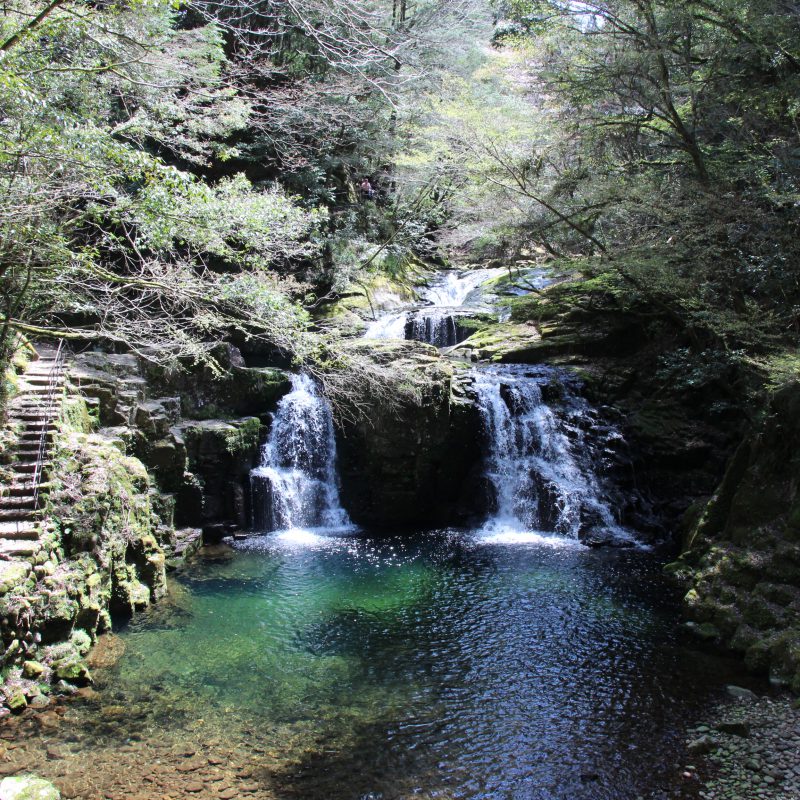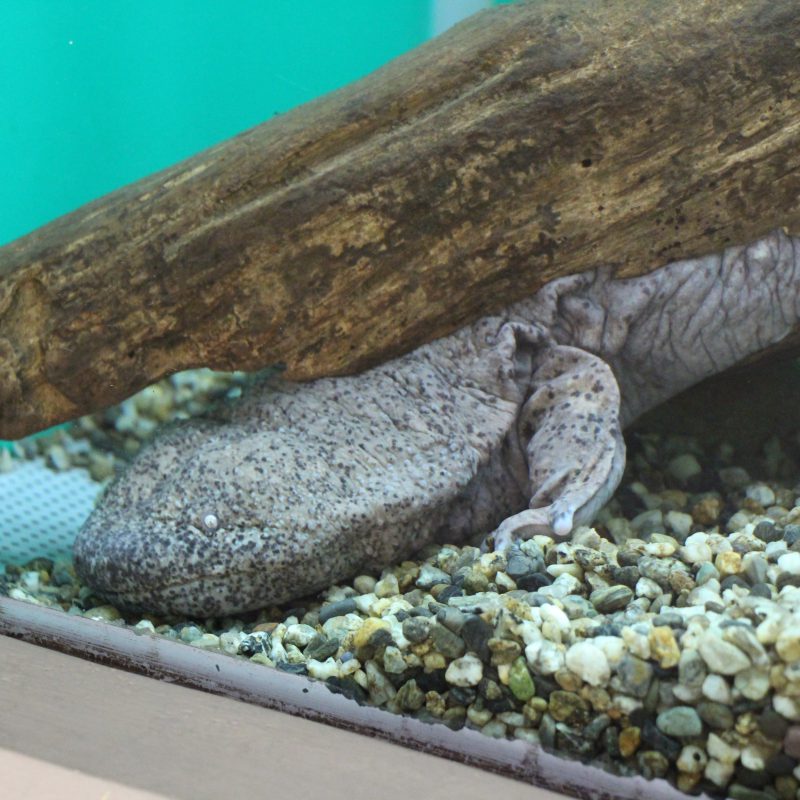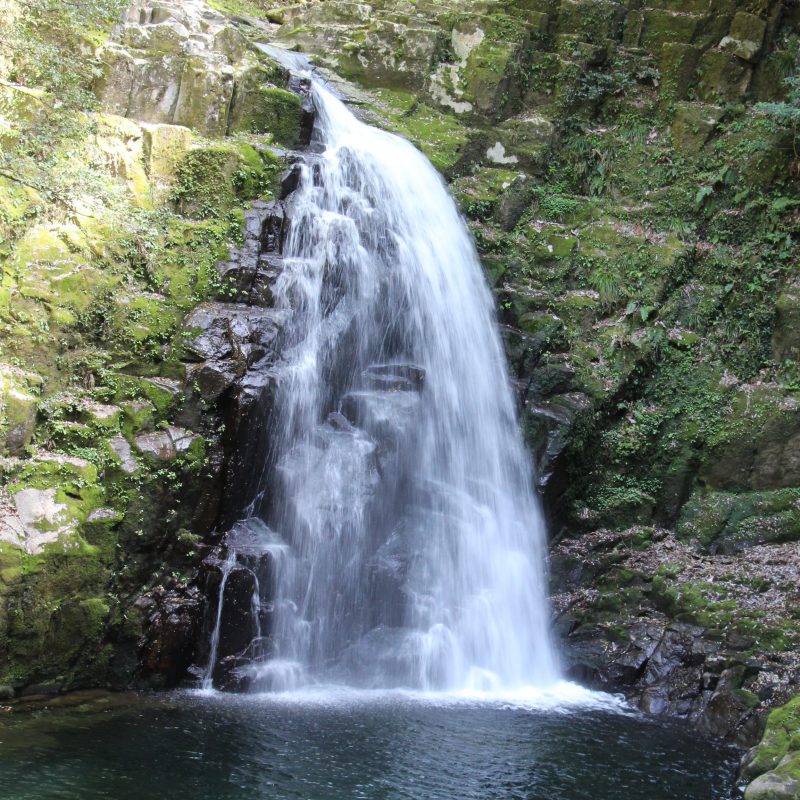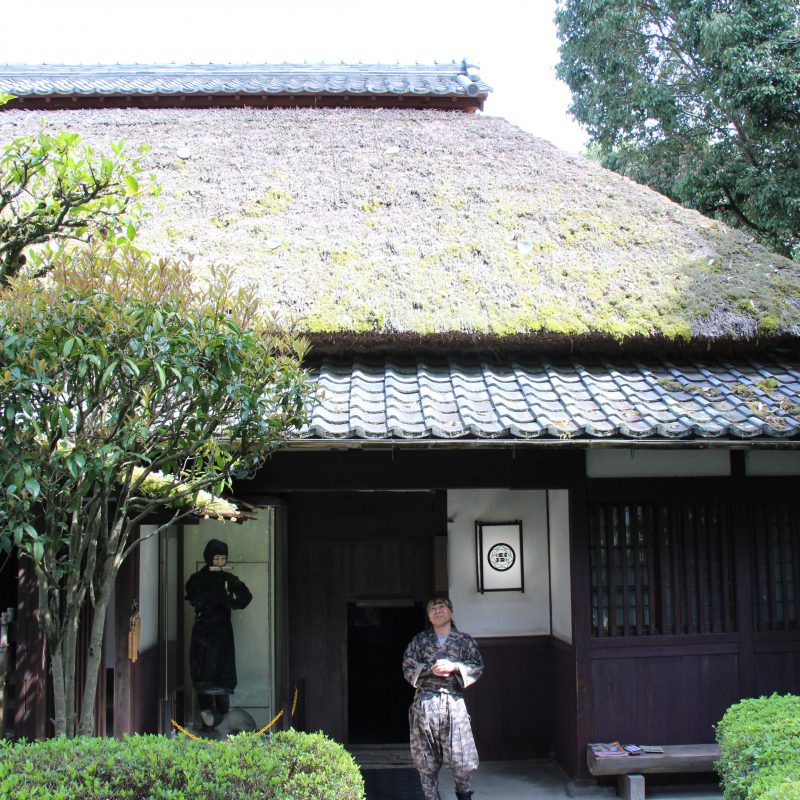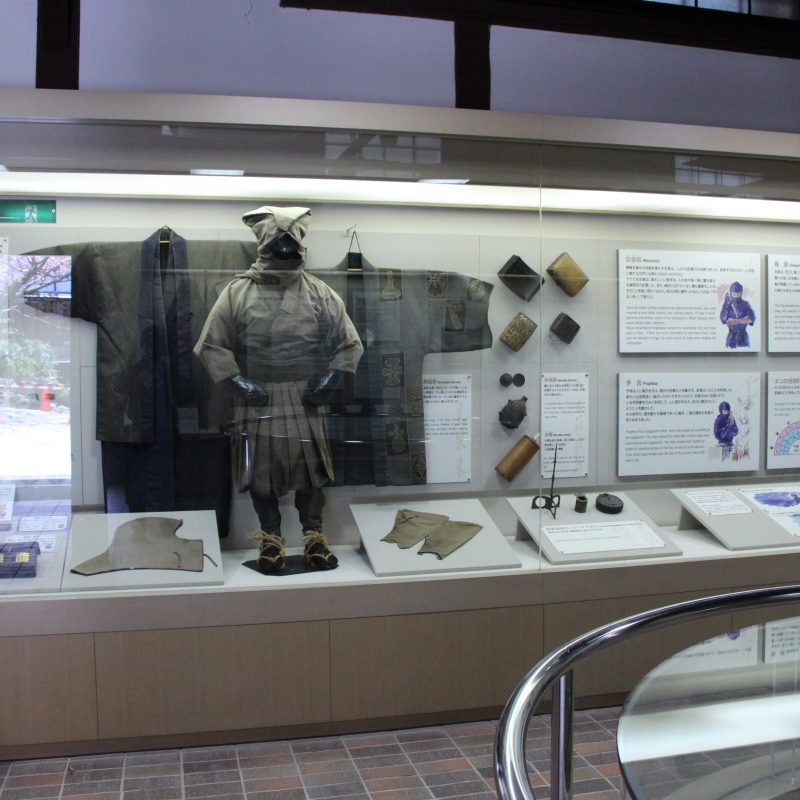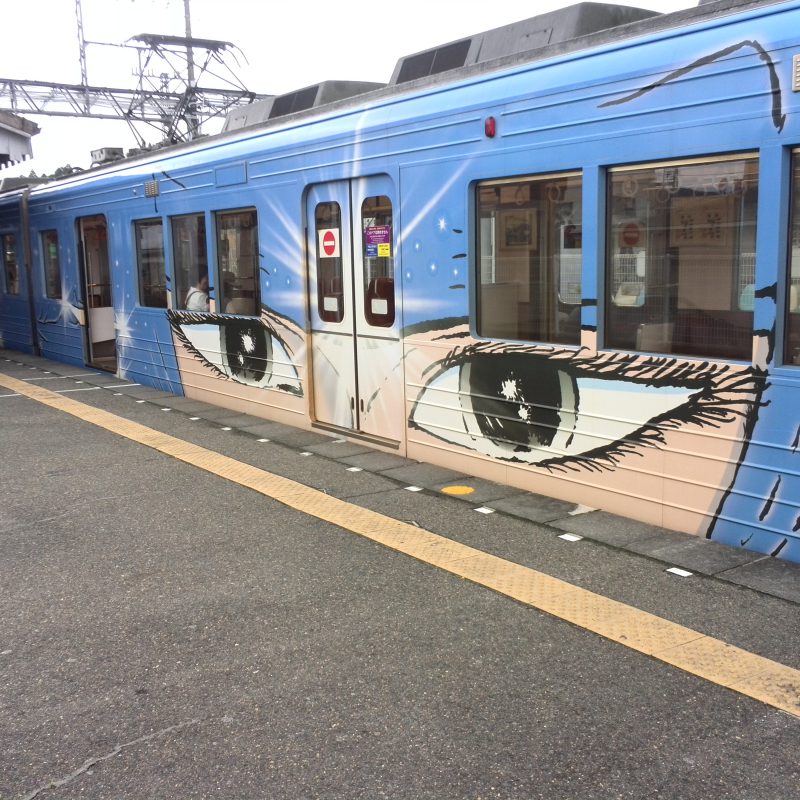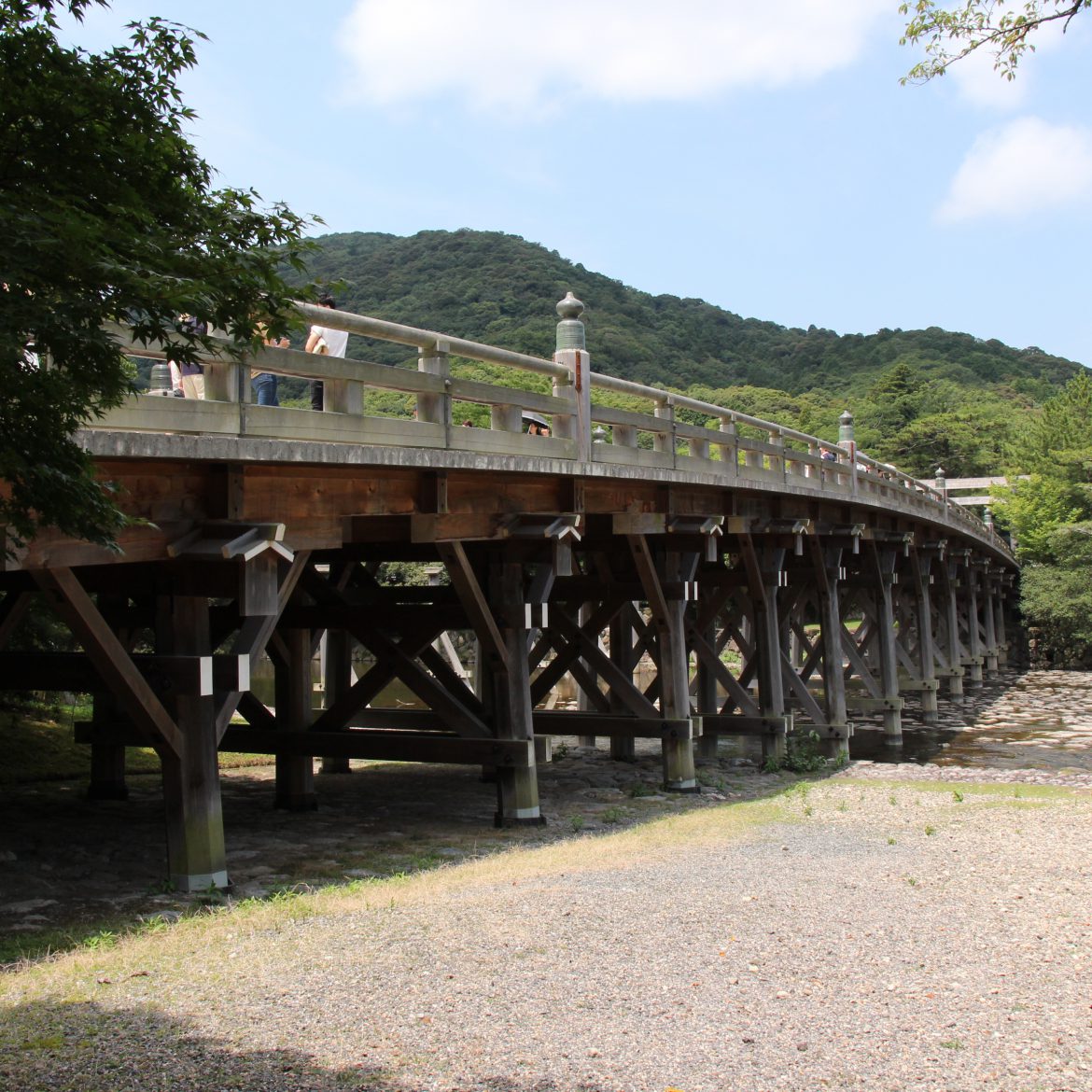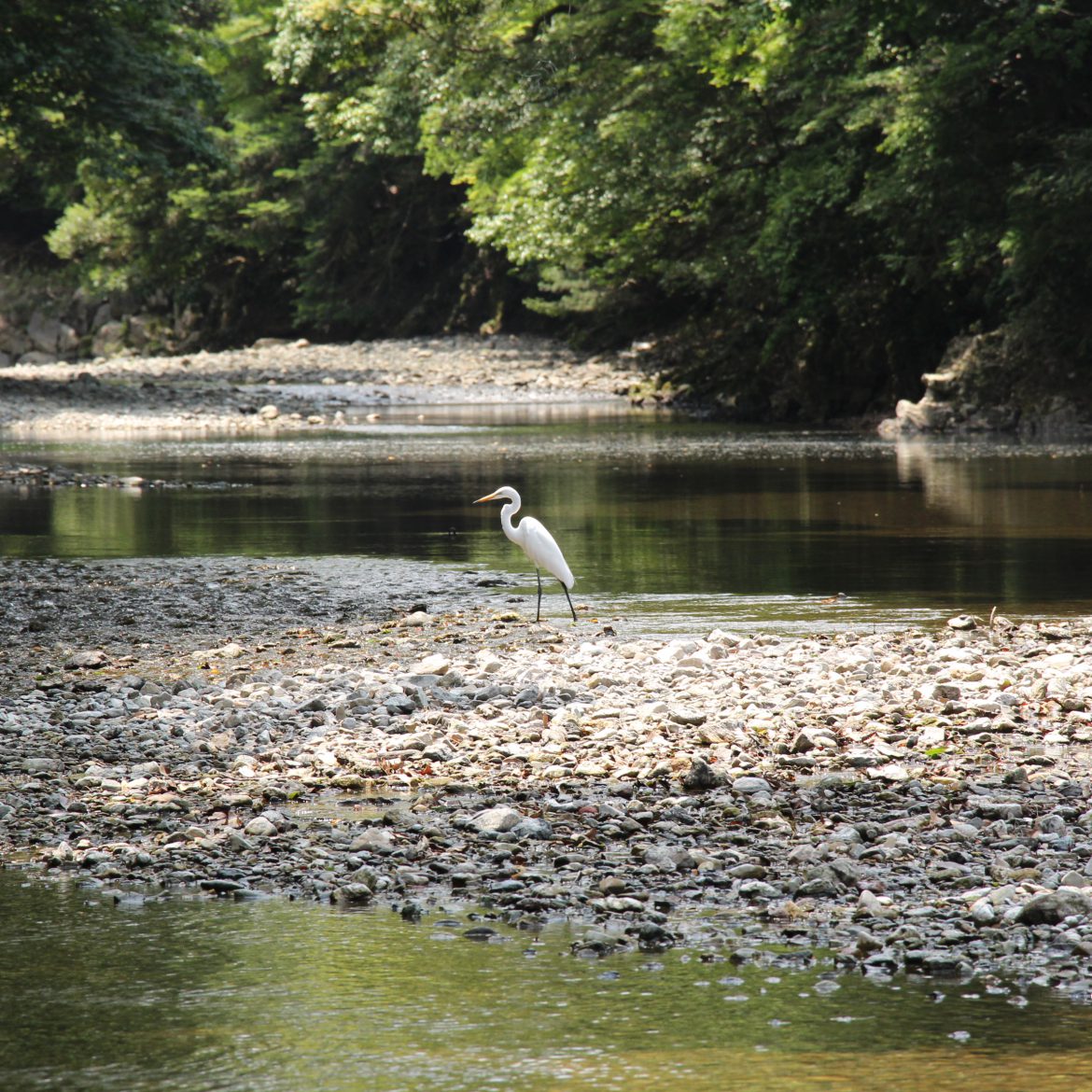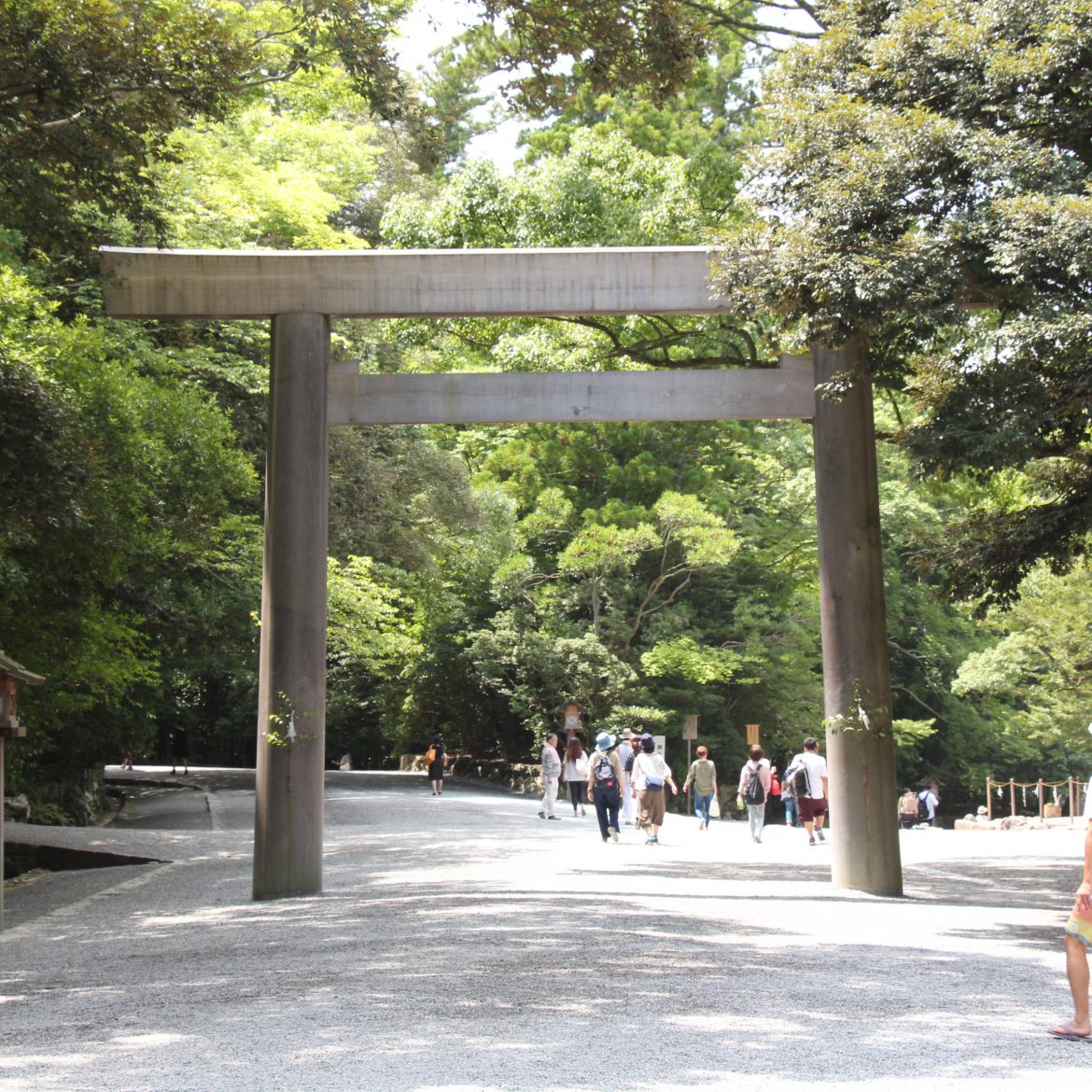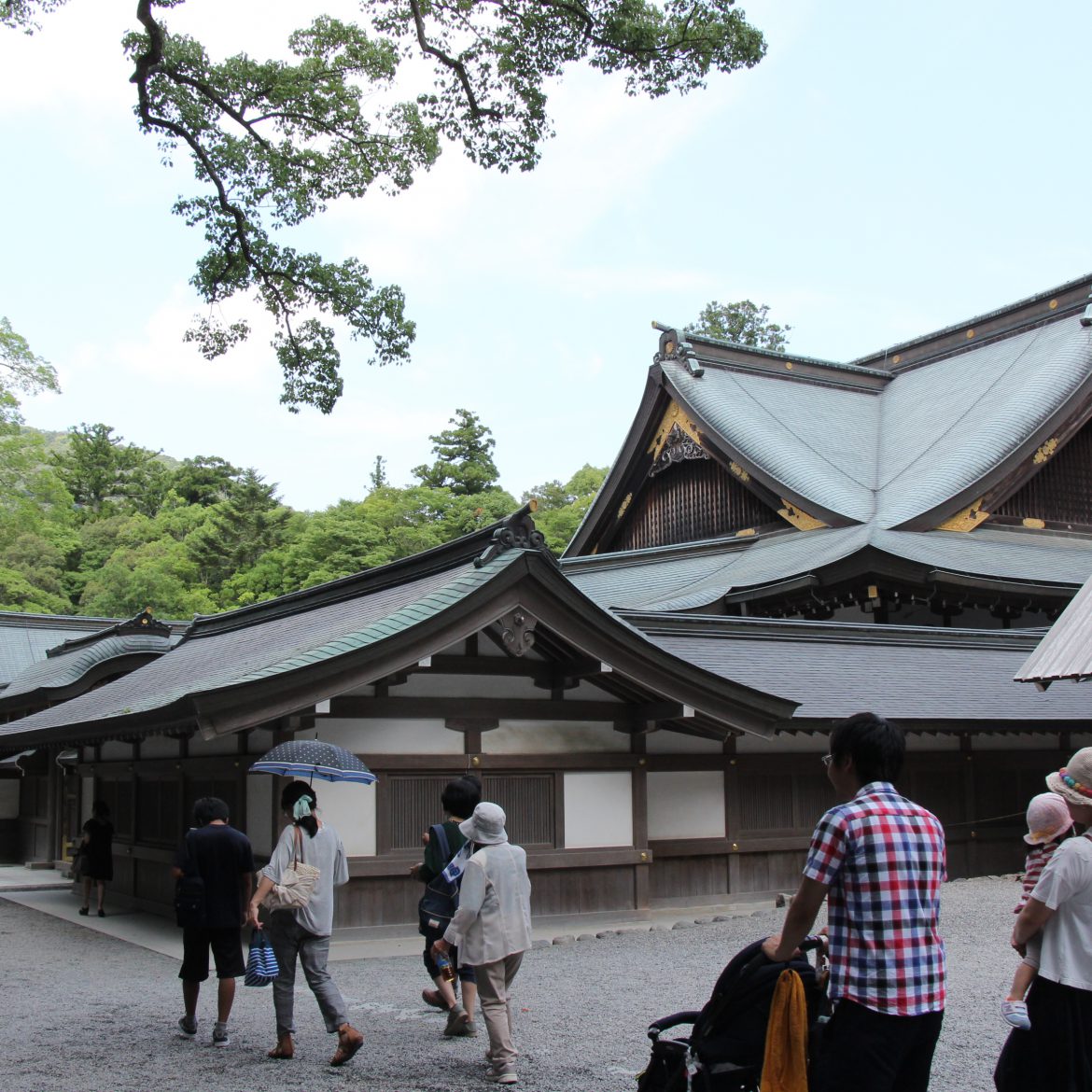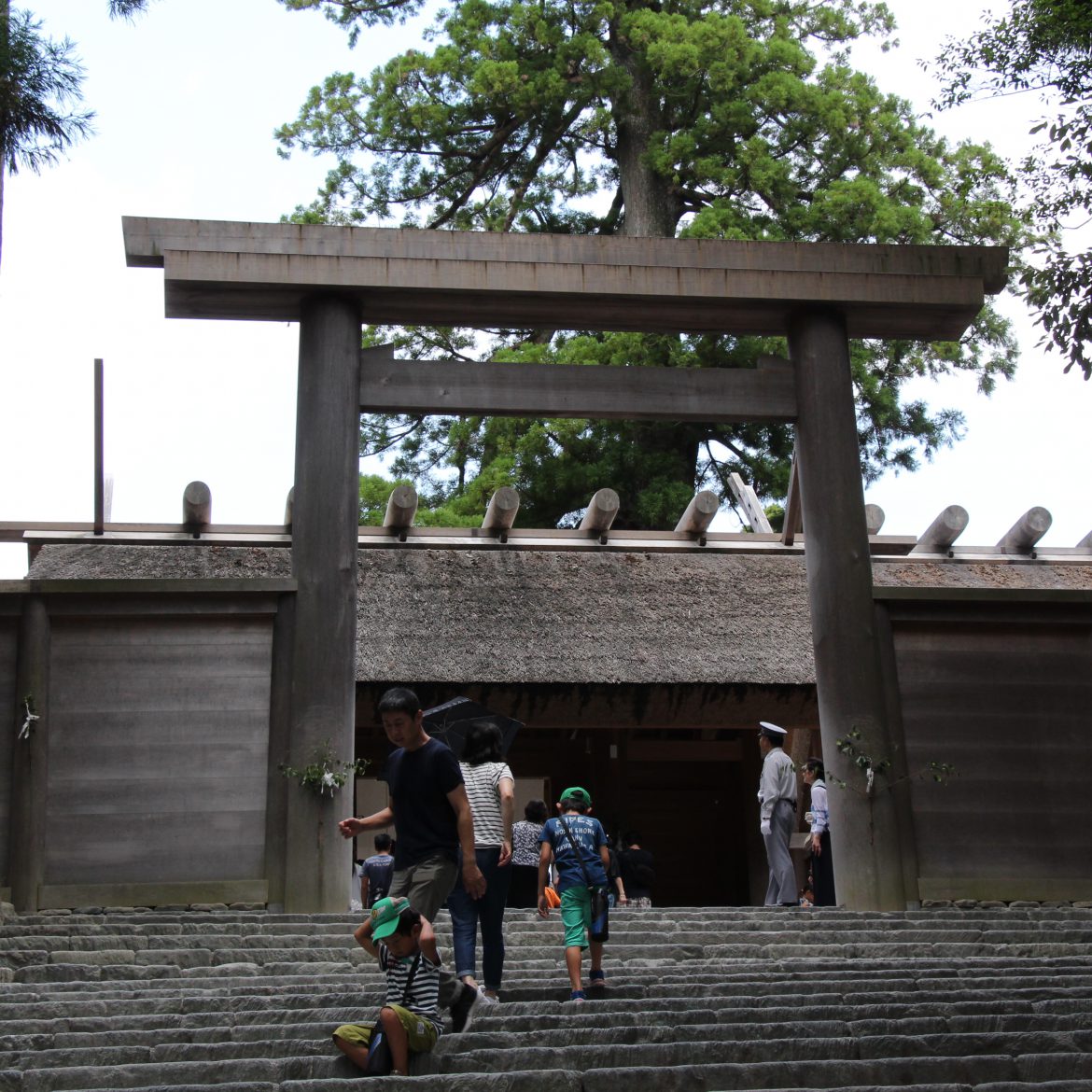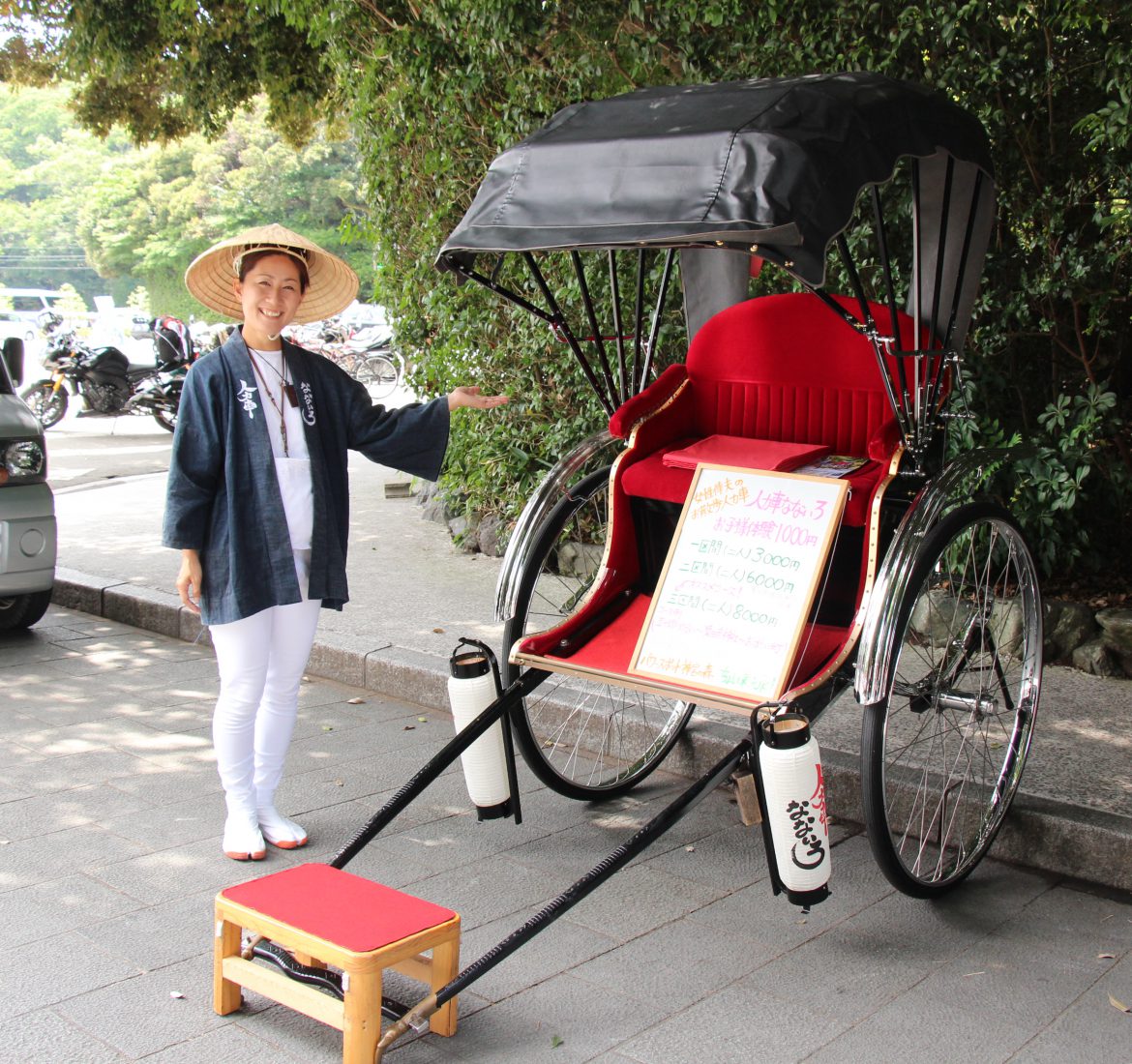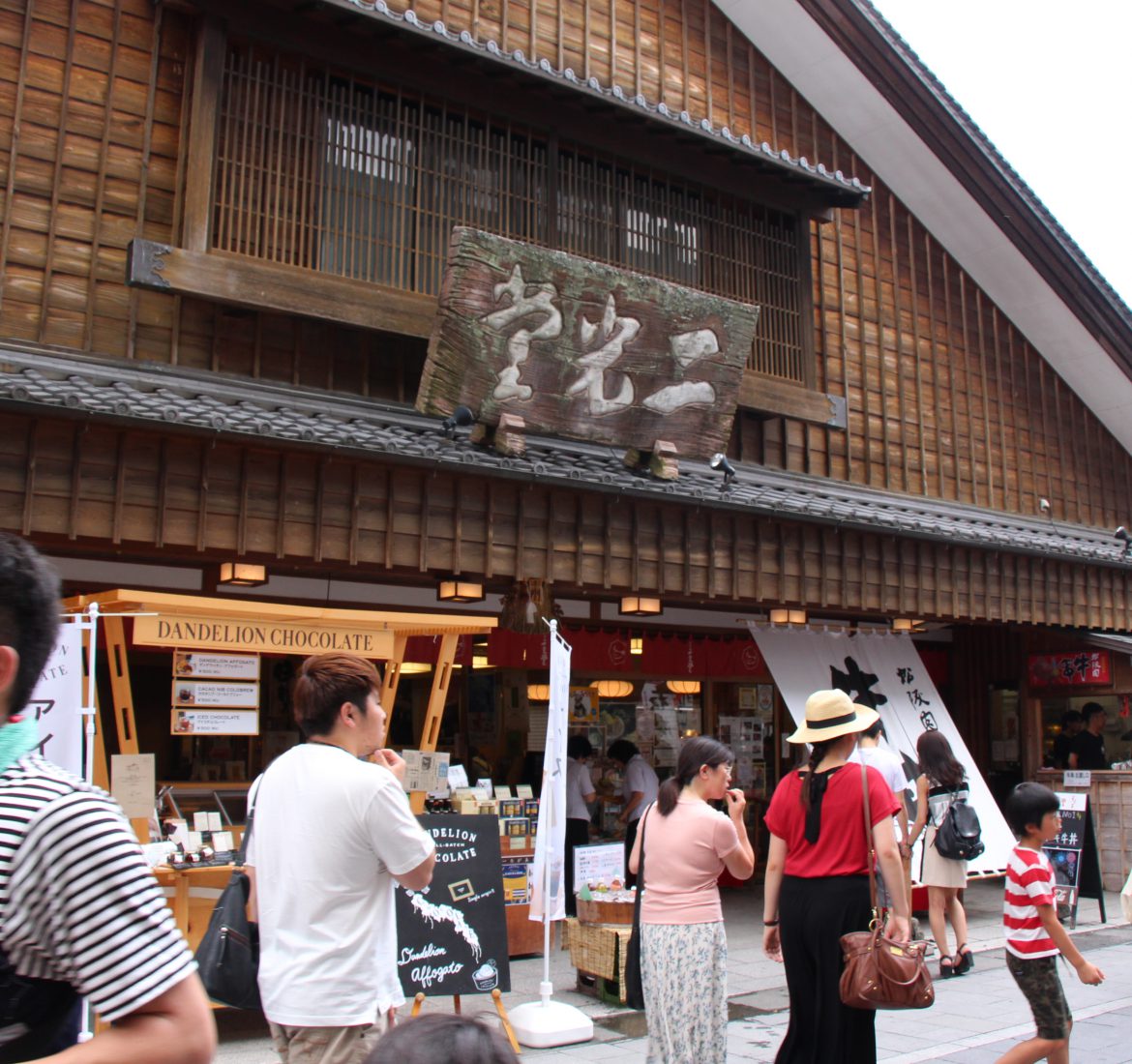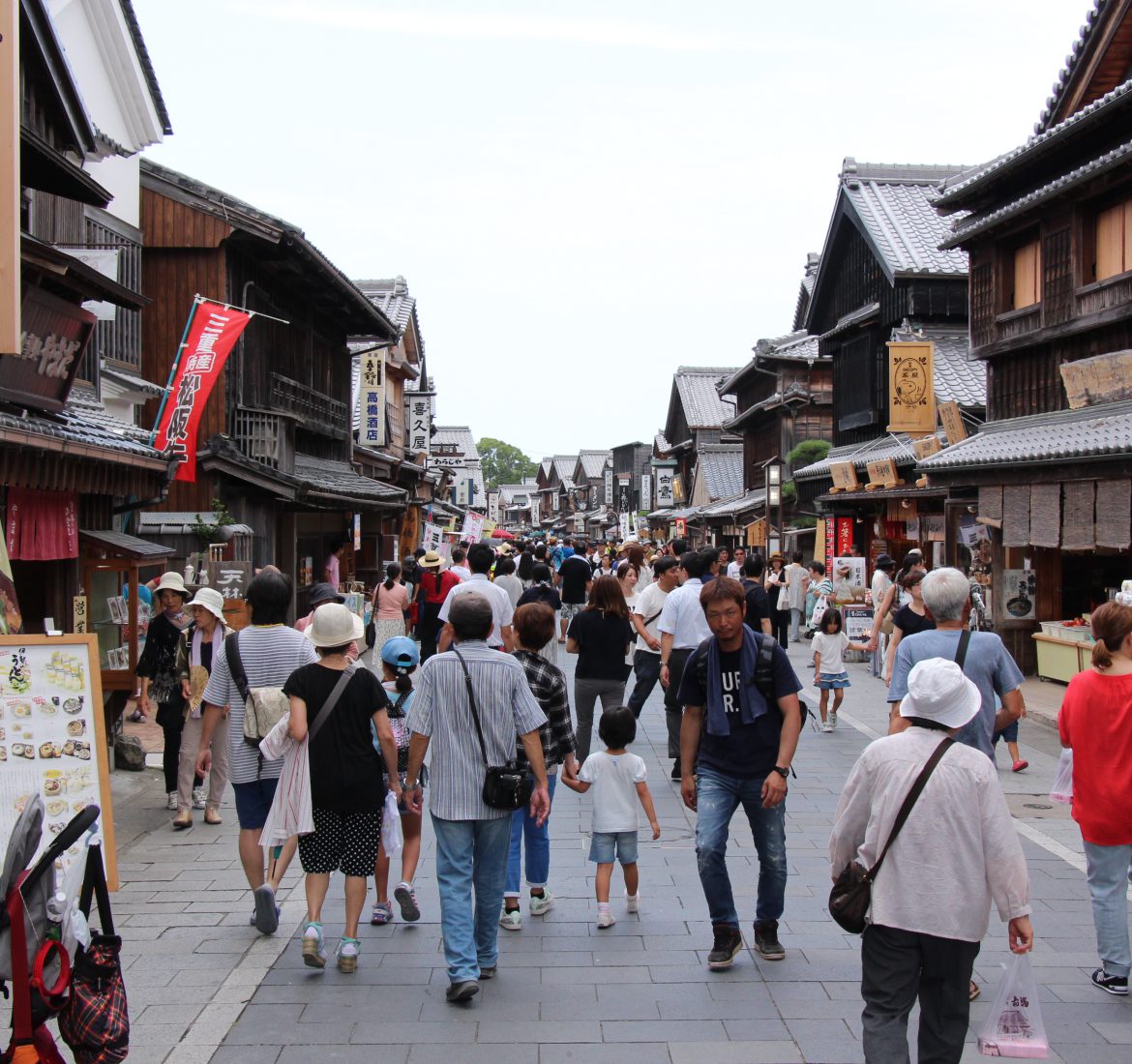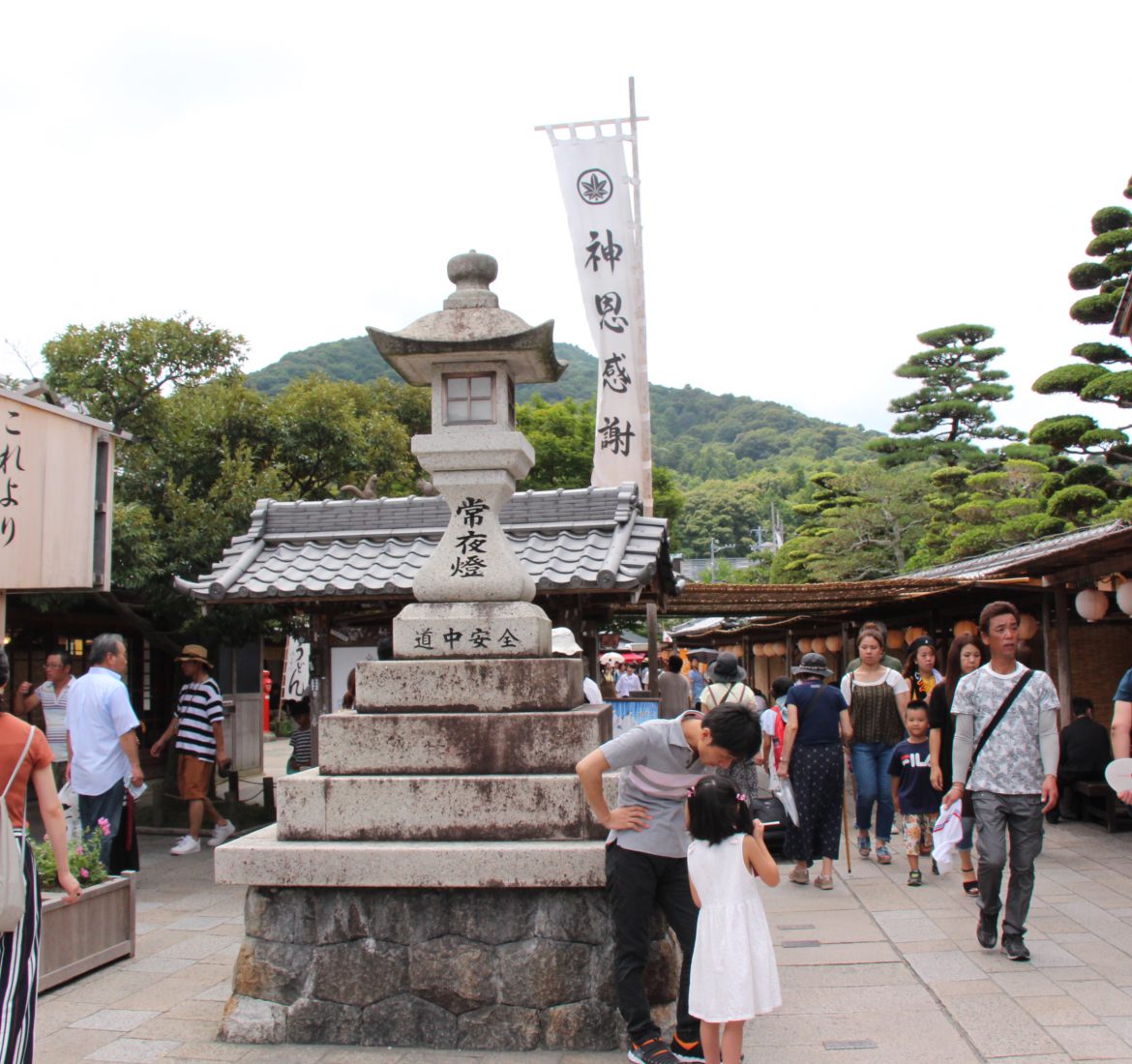Local Attractions nearby
“Murou-ji” temple
(Admission: 600 JPY)
Get off at “Murouguchi Oono” Station on Kintetsu Osaka line and take a bus for “Murou-ji” (15 mins bus ride)
In the remote valley of a serene “Murou-gawa” river, you will find Buddhist statues and other items recognized by the Japanese government as national treasures and important cultural properties in the sanctuary surrounded by seasonally changing beautiful trees and flowers. As you climb the stone steps, you will look up to a five story-pagoda which is a beautiful symbol of the greater temple. As opposed to the “Kouya-san” Buddhist mountain where only men were allowed to visit, this temple is called as “Nyonin Kouya” which means female version of “Kouya(san)”. Among the beautifully blooming trees and flowers throughout the seasons, the temple is especially known for their Rhododendron. The legend says that a dragon god lives in “Muro-yama” (mountain) and there is “Ryuketsu-Jinjya” shrine next to the temple. On their website, in the ancient time, when “Koubou Daishi” (a very famous Japanese monk) conducted praying rituals for rain, a dragon king appeared. The shrine has huge trees and it is very impressive.
“Hase-dera” temple
(Admission: 500 JPY)
Get off at “Hase-dera” Station on Kintetsu Osaka line
“Hase-dera“ temple is the 8th of the western 33 temples. From “Niou-mon” gate at the entrance, visitors will walk up 399 steps to the main hall. Lanterns decorate the path, setting a graceful atmosphere. The principal Buddhist statue, 11 faced “kannon” (Avalokiteshvara), is over 10 meters tall. It is the biggest wooden carved statue, and it is recognized by the Japanese government as a national treasure and important cultural property. The main hall storing the statue is built on a cliff like the famous “Kiyomizu-dera” temple in Kyoto. Visitors enjoy cherry blossoms in spring, , fresh green leaves in summer and bright red and yellow leaves in autumn.
“Akame” 48 falls
Get off at “Akame-guchi” Station on Kintetsu Osaka line and take a bus for “Shijyu Hattaki” (10 mins bus ride)
The valley stretches about 4km and visitors enjoy various waterfalls during the hike. It takes about 3 hours for a round trip. The hike is known for cherry blossoms in spring and bright red and yellow leaves in autumn. The river is a habitat for giant salamanders, one of the world’s largest amphibian species. These giant salamanders are bred and displayed at the Japan Giant Salamanders Center.
